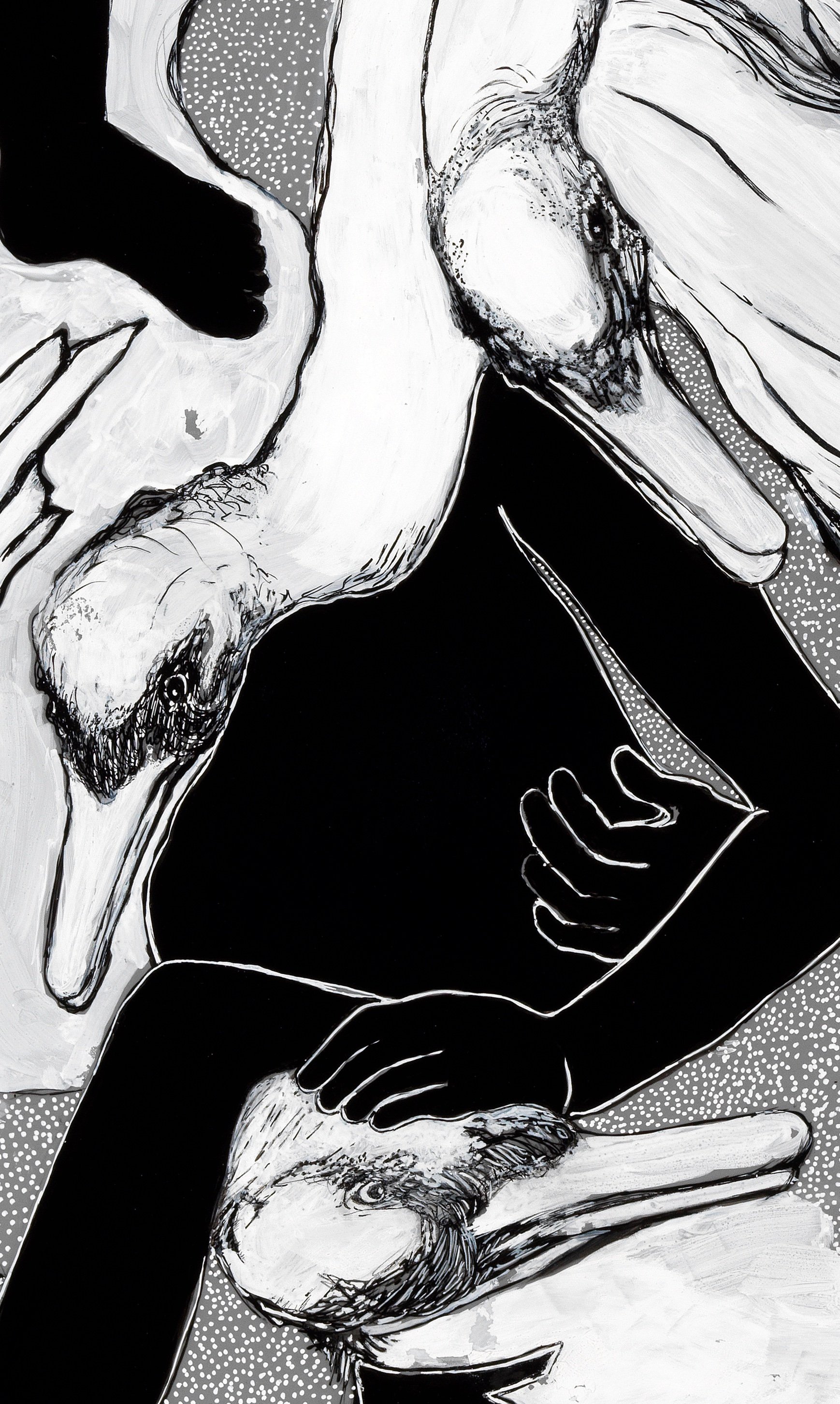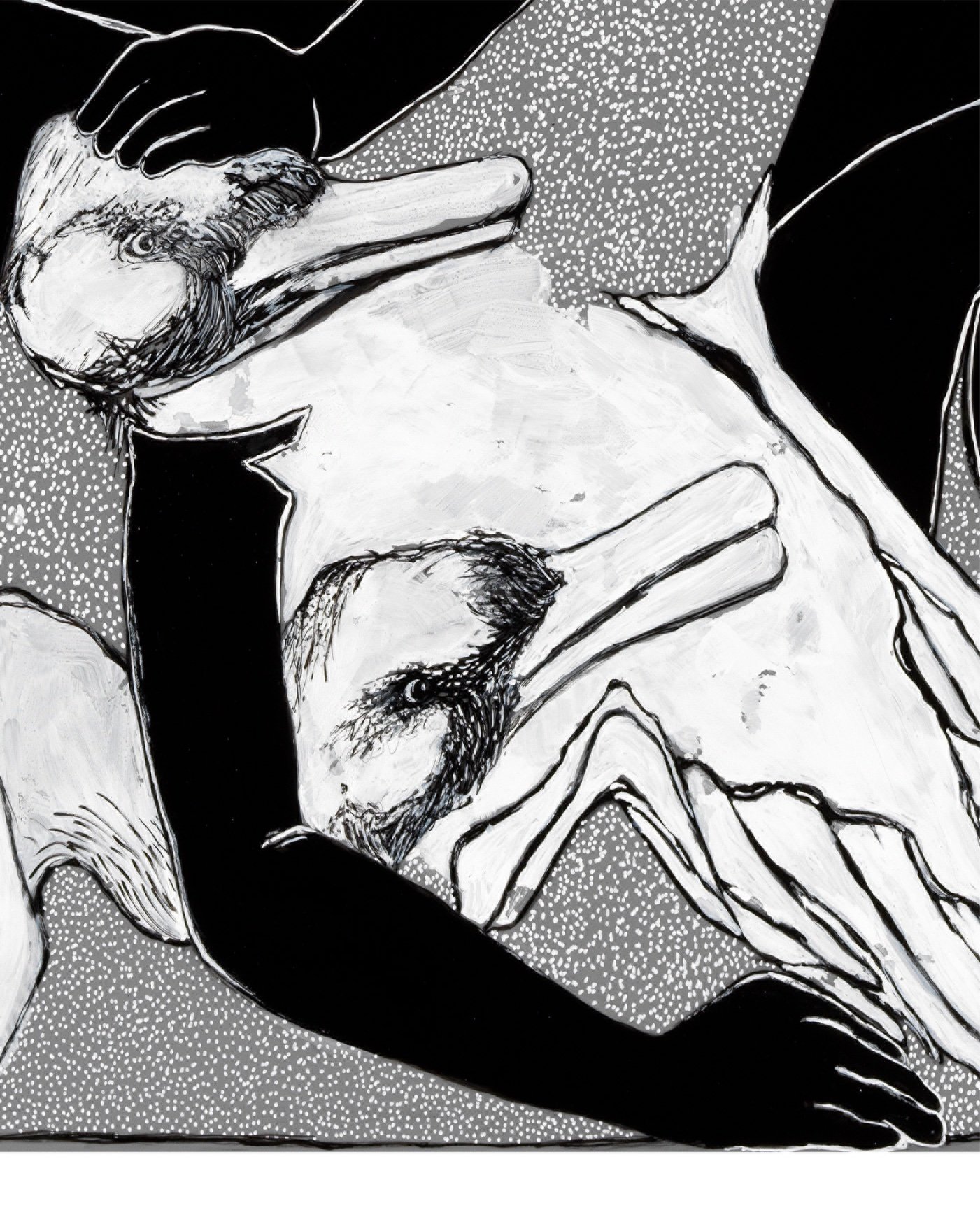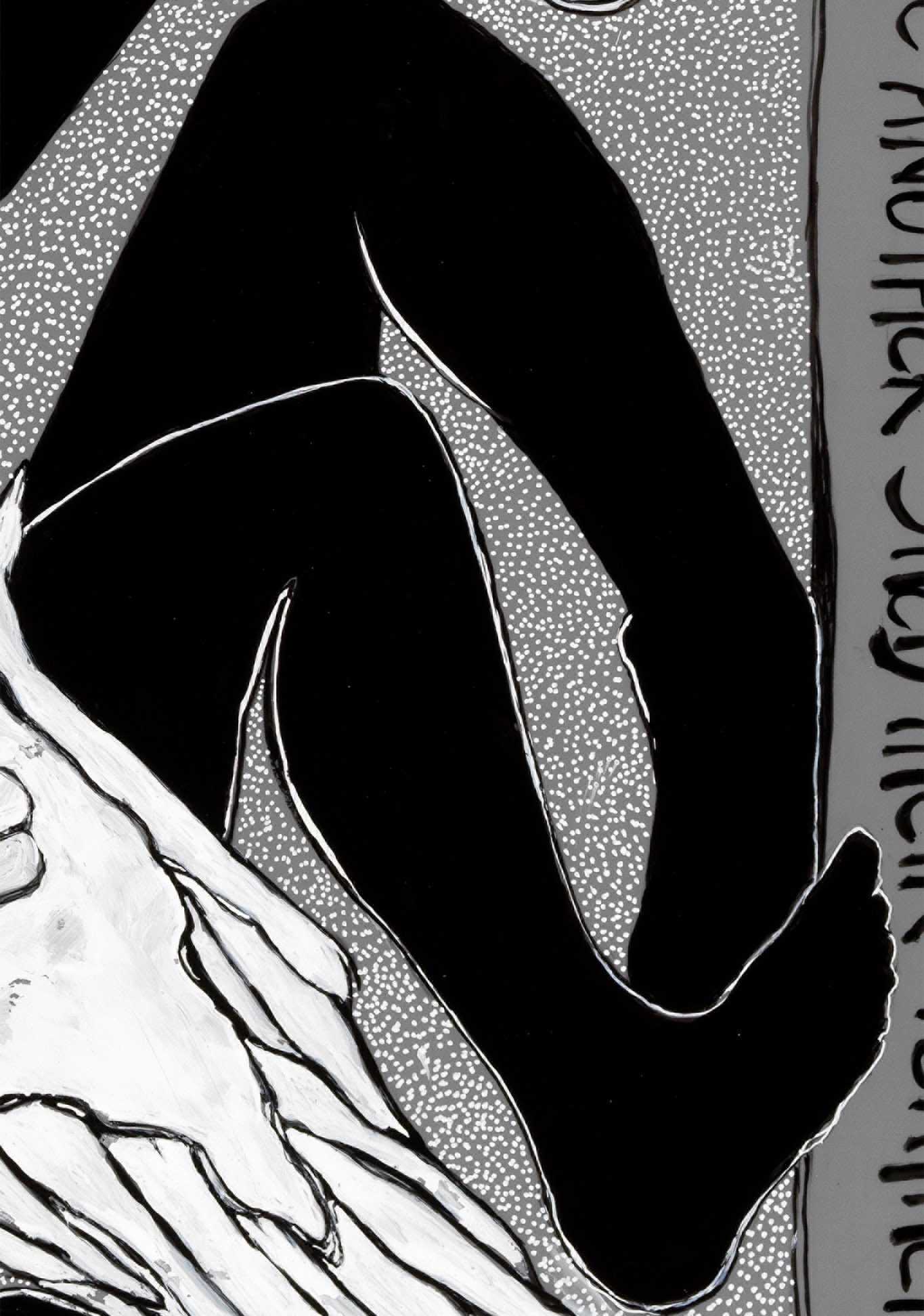Enchanted Children
2024-2025
casein paint, ink, graphite on Duralar 40 x 58
casein paint, ink, graphite on Duralar 40 x 58
How much of becoming yourself is the result of belonging to a community that recognizes you?
My art making comes from teaching folklore and fairytales. From stories I know that “In everything there is everything.” Meaning that even in the worst of times there are directions leading us toward where we belong. Both exist albeit in different proportions. Our bodies keep going despite immeasurable suffering. We are capable of transformation and also of being many things at once.
My work rests on a continuum from trauma to transformation, telling stories about inter-generational, cultural, and political wounds.
Making visible what happens on that continuum is an act of holding – “Holding is an act that implies weight and assistance, an act of touching and proximity, a gesture of binding rather than division.[1]
Holding is especially important for children whose experiences are often trivialized. Children, and childhood as a life stage, frequently falls into a kind of in-between-yet-preserved realm of eternal liminality.
(1) Helen Molesworth, Art is Medicine: on the work of Simone Leigh, Art Forum 2018
“We Can Only Be Human Together” is about injustices done to children when adults wage wars. It is about children as the collateral damage and also as the intended casualties of violence. This painting is inspired by the Grimms’ story The Six Swans in which an evil queen enchants her seven step children. She turns six boys into swans and tasks the remaining sibling, a girl, with great and cruel sacrifices that are conditional for restoring her brothers to their sustainable human form. Until their sister completes her tasks, the boys can only return to human form for fifteen minutes each day if they use their magical breath to blow away their feathers. I show the moment of transformation from swan to human as each child helps another.
The painting reflects a style that is found on Archaic Greek”black figure” vases. Typically each vase would depict two scenes from a story. Often text would run through the visual narrative creating commentary but not interfering with the visual narrative.



















